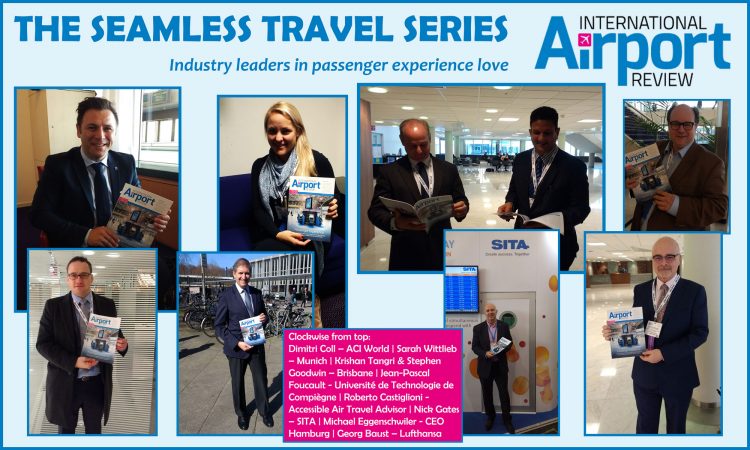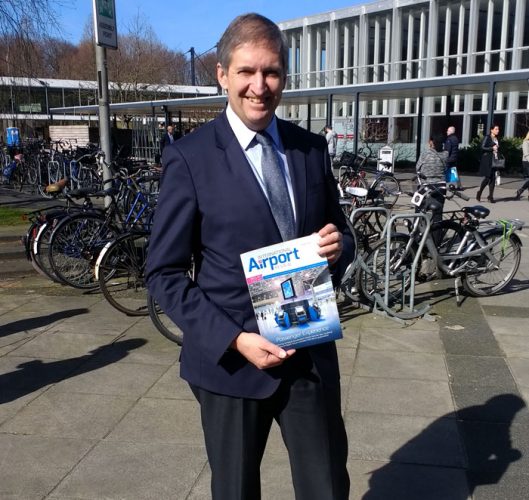Elevating experience at Hamburg | The Seamless Travel Series
- Like
- Digg
- Del
- Tumblr
- VKontakte
- Buffer
- Love This
- Odnoklassniki
- Meneame
- Blogger
- Amazon
- Yahoo Mail
- Gmail
- AOL
- Newsvine
- HackerNews
- Evernote
- MySpace
- Mail.ru
- Viadeo
- Line
- Comments
- Yummly
- SMS
- Viber
- Telegram
- Subscribe
- Skype
- Facebook Messenger
- Kakao
- LiveJournal
- Yammer
- Edgar
- Fintel
- Mix
- Instapaper
- Copy Link
Posted: 3 April 2017 | Michael Eggenschwiler | CEO | Hamburg Airport, Sarah Wills | Editorial Assistant | No comments yet
An exclusive insight from Hamburg CEO Michael Eggenschwiler on the changing relationship between airport and air passenger.
The conversation is shifting. It is no longer a question of passenger experience. Air travel is now defined by ensuring seamless travel. In this new online series, International Airport Review will explore different perspectives from industry leaders such as SITA, Munich Airport, ACI World and many more to consider the ways in which the concept of seamless travel is now defining the changing world of air travel.
For an introductory definition of ‘seamless travel’, click here…


Whether airport, airline, or passenger, the rate of change we are experiencing in our industry is increasing exponentially, and will only continue to do so. Michael Eggenschwiler, CEO of Hamburg Airport, tells International Airport Review’s Roy Manuell at Passenger Terminal Expo 2017, why we all need to be a bit bolder in the pursuit of seamless passenger experience.
So you’ve recently announced a new art gallery at the airport. Why do you think projects such as these are so important?
I think projects like these help to make an airport more individual, a bit more special and a bit more dedicated with issues not seen in every airport. Too many airports look alike. An art gallery, something you don’t have in every place, brings a distinctive touch, and also reaches different people. It is something different, something people speak about, something they say I want to come in to see that, and that engagement with our passengers and visitors is fantastic for us as an airport. From what I’ve heard the gallery is quite pleased with the way it’s taken off, and the response we’ve received.
So what kind of feedback have you had?
I think we’ve had an exceptionally significant press coverage, the level of which took us by surprise. But it just shows that if you dare to go down a different path, you may just tap into customer areas which you didn’t really expect to. That way you broaden your perception area, your area of knowledge.
How did you come to decide to do this?
We have a lot of contacts with people interested in appearing at the airport. Airports are a space in which many people like to exhibit. Also, there was the commercial side of the argument – it’s a gallery, it’s a shop, so we decided to give this opportunity a try. I believe it is good to have the courage to do new things, to be bold and say let’s try this, let’s see how it works, and also have the courage if necessary to say it didn’t work and move on. I’m pleased to say in this case our boldness is paying off.
So what’s the next new thing, what’s the next project?
We are currently refurbishing our entire passenger area to make it more distinctively recognisable as a part of Hamburg Airport. Our aim is for our passengers to be able to identify, the second they arrive, exactly where they are. We want to create a local touch with colours, with pictures to create a particular ambience. And that’s our goal throughout various parts of the airport.
Today there is much talk about the importance of an airport reflecting its city and having that relationship with its surroundings. Do you have any particular thoughts on how best to integrate a city into an airport?
Well, I think one method is through the use of pictures, colour and other visual aspects. Pictures speak a language. We also have different seats on offer: lounge seats, different benches in our airport, and it is attributes such as these that reflect the styles, designs and colours which are associated with our city. Personally I think that pictures and colours are probably the best medium through which to create this feeling of the airport being part of a bigger picture, of the city of Hamburg as a whole.
From a general perspective, what would you say is the single biggest challenge to passenger experience in the modern day?
The single biggest challenge is organising, and using all of our data in a way that benefits the passenger. We, as the providers of the industry, need to ensure that data is structured, so that we can move along this travel chain, and help to create a seamless travel experience for the passenger.
It’s a big challenge, but seeing it from the passenger’s point of view is the most important thing for us. The passenger wants one contact for their entire journey.
So how do we go about ensuring this?
That’s the question I would say. I think each of us has to start somewhere. The industry will have to start to build joint standards for communication and have a working interface. The example I always use is the baggage tag; that was created in the 50s and the 60s, and is standard worldwide today. I think that’s an example which, if we could get into digital standards, with an interface and working data, then we’ll be able to achieve. But that’s a long way ahead.
Going back to the idea of data and using that to personalise passenger experience, do you think there’s a challenge faced in Europe regarding customers feeling apprehensive of their data being used?
It probably varies as you move from one customer group to another. The younger generation is less resistant than the older generation who are much more careful. Something you also need to take into account is that there are different ways of sharing your data. I think you also need to provide passengers with the reassurance that you’re not going to be inundating them with data, as no-one wishes to be receiving emails several times a day about something that isn’t even of interest to them. So, gaining the trust from your passengers that you will only provide and use personalised data is another challenge we have, and that’s where we need to ensure that we see it from the viewpoint of the customer.
So what role do technologies have in creating a seamless passenger experience?
Technologies are going to be the basis in creating a seamless journey for the passenger, so when you need a big data system, the standard interface, you will have to have communication between the various systems and that’s going to be the big challenge. But, there again, with the advances in digital technology this is something that I think will be happening quicker than we can even imagine.
So you envisage mobile solutions, the customer actively using their smartphone across their entire journey?
Yes, it is going to be the way. I see it becoming more and more personalised to, in time, having a data connection with your mobile to identify yourself, that could even go as far as face recognition.
Do you think that’s a possibility in the near future?
Why not? In the ideal world you’d just be walking through an airport and onto an aircraft using some sort of device which will ensure that you are yourself and you have booked onto that flight, without the hassle you normally experience today of all the various focal points.
That’s effectively how we can create that seamless experience, eventually?
I think security is going to be the key, if not the factor. As soon as you walk into an airport the system, the airline, will know that you have arrived, will know that you wish to check a bag, enable you to go through security, all without really disturbing you.
Specifically at Hamburg Airport, what are you most excited about for next year?
This year we shall be introducing automated baggage drops, systems which shall be non-airline dedicated. I think, eventually, you’ll just have baggage drop regardless of which airline you’re flying on.
When is that going to be in place?
We aim for it to be in place late summer of this year (2017). Once the system is there and we see it works, enough people will follow. That’s why I think it’s good to start something; get it going, and if you do it right, then you’ll be able to roll it out fairly quickly.
Do you think there needs to be a greater collaboration between airlines and airports in order to create seamless travel for passengers?
Yes. That is going to be a step-by-step approach. We need to make sure that the advantages for both the airport and the airline are clear, but primarily must be focused, once again, on the passenger. I don’t believe that the passenger especially minds whether it is the airport or airline who handles their data, providing they work together to use that data to provide them with seamless travel.
I don’t believe that the passenger especially minds whether it is the airport or airline who handles their data…
And that’s where I think airports and airlines will need to sit together with that in mind, not viewing it simply as ‘my’ data or ‘your’ data.
Seeing it through the eyes of the passenger…
That’s something we always try to do. We do our research, we speak to the passengers, because often we will discover that the passenger doesn’t actually want what we think they want. That may be unpleasant for us to hear, we may have to re-think our plans or ideas, but it’s what we have to do to ensure we really are working in the interests of our passengers.
So imagine we’re having this conversation in a years’ time, at Passenger Terminal Expo 2018, what do you think will have changed?


I think you will see big changes in a years’ time. I think you’ll see a growing awareness of the need for, and inevitability of, technological change. We’ve got to be ready to adapt to this because I think that changes are going to happen a lot faster in the coming years then they have previously. And if that awareness is already there, then that’s a big step forward.
Related topics
Aeronautical revenue, Big data, Biometrics, Economy, New technologies, Passenger experience and seamless travel, Passenger volumes, Terminal operations


















